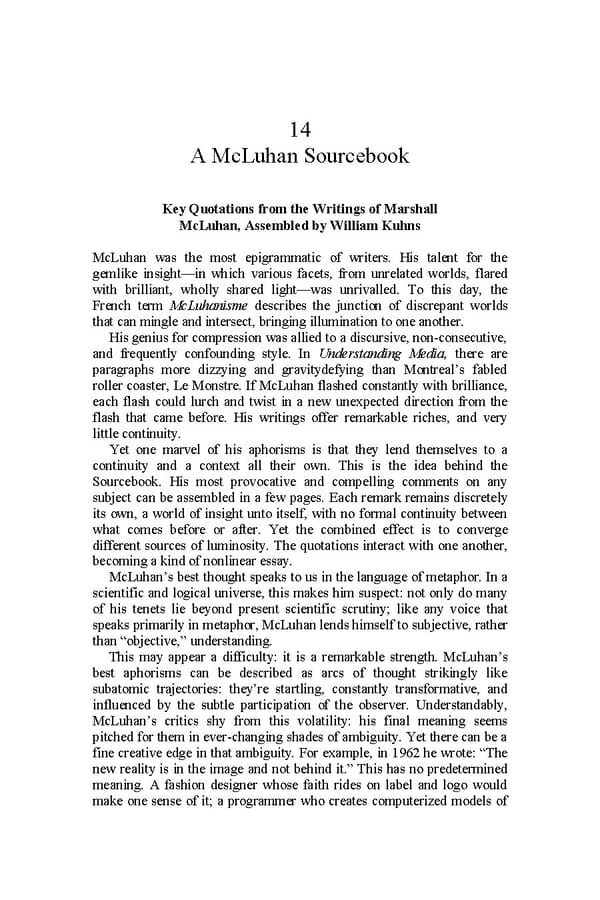14 A McLuhan Sourcebook Key Quotations from the Writings of Marshall McLuhan, Assembled by William Kuhns McLuhan was the most epigrammatic of writers. His talent for the gemlike insight—in which various facets, from unrelated worlds, flared with brilliant, wholly shared light—was unrivalled. To this day, the French term McLuhanisme describes the junction of discrepant worlds that can mingle and intersect, bringing illumination to one another. His genius for compression was allied to a discursive, non-consecutive, and frequently confounding style. In Understanding Media, there are paragraphs more dizzying and gravitydefying than Montreal’s fabled roller coaster, Le Monstre. If McLuhan flashed constantly with brilliance, each flash could lurch and twist in a new unexpected direction from the flash that came before. His writings offer remarkable riches, and very little continuity. Yet one marvel of his aphorisms is that they lend themselves to a continuity and a context all their own. This is the idea behind the Sourcebook. His most provocative and compelling comments on any subject can be assembled in a few pages. Each remark remains discretely its own, a world of insight unto itself, with no formal continuity between what comes before or after. Yet the combined effect is to converge different sources of luminosity. The quotations interact with one another, becoming a kind of nonlinear essay. McLuhan’s best thought speaks to us in the language of metaphor. In a scientific and logical universe, this makes him suspect: not only do many of his tenets lie beyond present scientific scrutiny; like any voice that speaks primarily in metaphor, McLuhan lends himself to subjective, rather than “objective,” understanding. This may appear a difficulty: it is a remarkable strength. McLuhan’s best aphorisms can be described as arcs of thought strikingly like subatomic trajectories: they’re startling, constantly transformative, and influenced by the subtle participation of the observer. Understandably, McLuhan’s critics shy from this volatility: his final meaning seems pitched for them in ever-changing shades of ambiguity. Yet there can be a fine creative edge in that ambiguity. For example, in 1962 he wrote: “The new reality is in the image and not behind it.” This has no predetermined meaning. A fashion designer whose faith rides on label and logo would make one sense of it; a programmer who creates computerized models of
 Essential McLuhan Page 267 Page 269
Essential McLuhan Page 267 Page 269